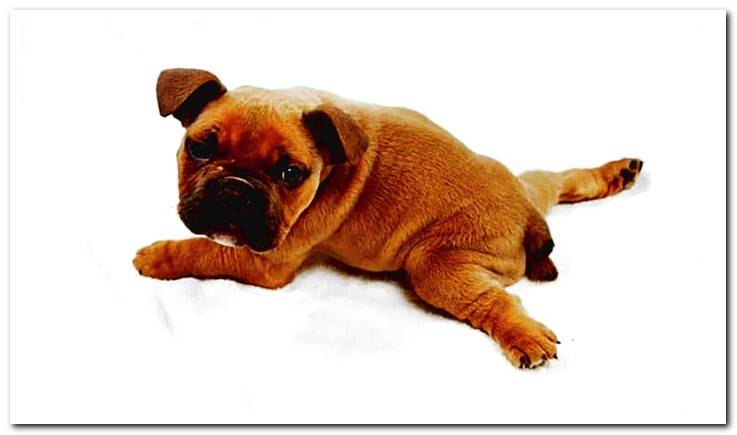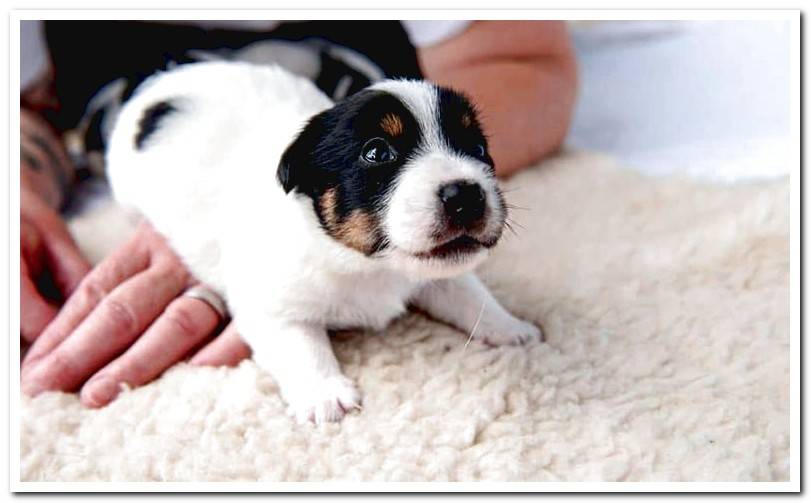
Under normal conditions, puppies begin to walk on their paws around three weeks of age, but there is a pathological condition that prevents pups from standing and walking, known by the name of swimming puppy syndrome.
Puppies with this syndrome maintain a position in which their chest and abdomen are in contact with the ground and its legs are extended to the sides So when they try to move, they move their limbs similar to turtles out of the water.
Until a few years ago, most of these puppies were slaughtered, however, currently the chances of recovery of these dogs, with adequate physiotherapeutic treatment and environmental management, are very high. In this article we will explain the causes of this syndrome and the guidelines to follow for its successful treatment.
Index of contents
- 1 What is swimming puppy syndrome?
- 2 What signs are associated with swimming puppy syndrome?
- 3 What are the causes of swimming puppy syndrome?
- 4 Treatment for swimming puppy syndrome
- 4.1 Intensive physiotherapy
- 4.2 Physiotherapy exercises at home
- 4.3 Position bandages
- 4.4 Environmental measures
- 4.5 Feeding control
What is swimming puppy syndrome?
Swimming Puppy Syndrome is a rare developmental disorder that affects newborn dog pups and is characterized by an inability of the animal to stand up and walk from three weeks of age.
The puppy’s limbs, mainly the hind legs, extend laterally and, in order to move, the dog makes lateral pedaling movements similar to those of a turtle out of the water.
This pathology is usually accompanied by a ventrodorsal flattening of the chest and hyperextension of the extremities. If these puppies do not initiate intensive physical therapy, they will not be able to walk and they will end up dying from associated pathologies.
What signs are associated with swimming puppy syndrome?
Under normal conditions, puppies begin to walk at approximately three weeks of age. When the offspring affected by this syndrome reach this age, they are not able to stand up, walk, or turn on their own if placed on their back.
Puppies with swimmer syndrome are easily identifiable, since they acquire a very characteristic position:
- Chest and abdomen in contact with the ground
- Extremities (mainly hind legs) laterally extended
- Forward movement is achieved only by lateral pedaling movements (creep).
Due to its limited mobility, often have trouble feeding and may begin to lose weight, growing less than the rest of the litter. In addition, this condition predisposes affected dogs to have digestive problems and regurgitate the food they eat, there is a risk that they will develop pneumonia by aspiration if the appropriate measures are not taken in its care.
Due to permanent contact with the ground, they usually develop erosions or ulcers in the chest area, which can be aggravated by contact with their own urine if the necessary cleaning measures are not acquired.

What are the causes of swimming puppy syndrome?
The causes of this syndrome are not currently known exactly, but it is considered that they influence hereditary and environmental factors.
Although this syndrome can affect dogs of any breed, dogs with short legs such as English Bulldog or Basset Hound are usually more predisposed.
The overweight of the puppies during their development and keeping them on flat and slippery floors are factors that can worsen this syndrome and even contribute to its appearance.
Treatment for swimming puppy syndrome
This pathology requires an intensive early physiotherapeutic treatment, which, accompanied by a series of environmental and management measures, will increase the possibilities of improvement of the puppy, being able to walk normally.
Intensive physiotherapy
The basis of the treatment of this pathology is physiotherapy, so you should go to a veterinary specialist in physiotherapy and rehabilitation to design a therapeutic exercise plan that we must do our puppy daily and several times a day. In addition, one of the most recommended therapies for the recovery of these dogs is pool hydrotherapy.
Rehabilitation is aimed at increasing muscle tone and strength, rectifying the range of joint movement, working on coordination and finally retraining the gait so that the puppy can stand up and walk on his own.
Physiotherapy exercises at home
The treatment requires great dedication from the owner, since the exercises must be performed several times a day:
- Massages: to stimulate circulation and to warm up the muscles before performing passive or active exercises, it is recommended massage Gently each leg from the toes to the trunk and the back from the head to the tail.
- Passive joint mobilizations: consists of making a smooth movement of extension-flexion of each of the joints of the legs of the puppy. Each joint should be mobilized individually 10-15 times. The rehabilitating veterinaryn will explain how these passive movements are carried out to avoid causing damage to the puppy. These mobilizations must be carried out 3-4 times a day.
- Keeping the puppy in season: We must place the puppy standing so that its four legs are in contact with the ground helping it to maintain its weight with our own hands, harnesses, cushions, etc. It is recommended to repeat this exercise 3-4 times a day, progressively increasing the time in which the puppy remains standing.
- Power assisted on sticky surfaces (egg cartons): Once the puppy is able to stand up, we should encourage him to walk (helping him to keep his balance) on a sticky surface. Egg cartons allow the puppy to take more stable steps by posing the paws inside the egg cup holes.
- Work coordination: When the dog is able to walk on its own, we must work on its coordination, creating circuits with small obstacles and floors of different textures. For example, we can spread rugs, artificial grass and insulation on the ground and place bars (a broomstick) as obstacles so that the puppy has to overcome them with his paws.
Posi
tion bandages
The rehabilitating veterinaryn may consider the bandages on its paws to be helpful for the recovery of the puppy, so that they keep them in a correct position and prevent them from opening or extending to the sides (bandages joining both hind limbs).
These bandages must be performed by a veterinaryn, since if they are not applied correctly they can limit circulation and trigger major problems.
Environmental measures
Puppies should be kept on a smooth and non-slippery surface and should be cleaned frequently since, due to their mobility limitations, they can remain in their urine being very abrasive for your skin. Fragrance-free baby powder can be applied to the puppy’s chest and abdomen after each cleaning to help prevent irritation.
Feeding control
Puppies affected by the syndrome may have trouble feeding and often develop digestive disturbances such as regurgitation of food. Therefore, it is convenient to control your diet during breastfeeding and even replace it with an artificial diet.
After each feeding, the puppy should be kept in a slightly vertical position for a few minutes to favor the advance of the food from the mouth to the stomach and a gentle massage can be carried out in the head-to-tail direction.
It is very sad that many of the cases of puppies with swimmer syndrome end in euthanasia, since, with perseverance and patience, the treatment explained above is generally successful and allows the recovery of these puppies, eventually becoming fully dogs. normal.
